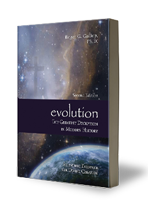Physical Scientific Evidence for Creation
Preprogrammed Design
Preprogrammed genetic systems are sometimes referred to as "specific complexity" or intelligent design. For biological systems to grow, there must be preprogrammed machinery to transform incoming energy into useful forms. For plants it includes photosynthesis, and for animals it includes respiration.
Another property that is most often overlooked is the essence or ingredient that “makes it alive,” which cannot be explained by referring to its chemical or genetic properties. Genesis 2 records that God first formed Adam out of “the dust of the ground” and then “breathed into his nostrils the breath of life, and the man became a living being” (Genesis 2:7, NIV) (soul and spirit). Also see Job 33:4, NIV and 34:14–15, NIV. If all it took were the right chemical ingredients, we should routinely see dead organisms springing back to life.
Energy cannot cause a dead creature to come alive. It takes more than energy—it takes order and organization and the “breath of life” (soul and spirit). Living things get their information from their parent organisms, but we never see genetic information arise from unprogrammed matter.
We know that chemical compounds ultimately break apart into simpler materials; they do not become more complex. Outside forces (for instance, man’s design of automobiles, computers, and technology) can increase order for a time (through the expenditure of relatively large amounts of energy, and through the input of design). However, such reversal cannot last indefinitely. Once the preprogrammed force is released, processes return to their natural direction—greater disorder or chaos. Energy is once again transformed into lower levels of free energy—that is, energy that is less available for further work.
The tendency of all natural systems is to become simpler and disorderly with time—which is in complete contradiction to the "chaos to cosmos, all by itself" doctrine of evolution.







 ShareThis
ShareThis